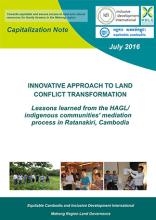Land Library
Welcome to the Land Portal Library. Explore our vast collection of open-access resources (over 74,000) including reports, journal articles, research papers, peer-reviewed publications, legal documents, videos and much more.
/ library resources
Showing items 1 through 7 of 7.‘Over the past three decades hundreds of thousands of farmers in Burkina Faso and Niger, on the fringes of the Sahara Desert, have transformed large swathes of the region’s arid landscape into productive agricultural land, improving food security for about three million people.
Valuable lessons can be learned from smallholder farmers who have successfully protected and regenerated tree cover across agricultural landscapes in Senegal, with minimal reliance on tree nurseries, seedling distribution or tree planting.
In the above initiatives, self-motivated populations increased food security and reduced vulnerabilities to climatic shocks by restoring and sustainably managing local forest resources.
By declaring the Decade on Ecosystem Restoration, the UN has recognized that there are only 10 years left to restore the world's degraded land. Countries are striving to fight climate change by 2030 through their Paris Agreement commitments and the Sustainable Development Goals (SDGs).
In the Mekong region, conflicts between local communities and large scale land concessions are widespread. They are often difficult to solve.
In a world grappling with the challenges of food insecurity, climate change, landscape degradation, and rural poverty, regreening offers a path forward, especially in dryland areas.
These guidelines have been developed based on FAO’s and WOCAT’s extensive experience. The book draws, in particular, on WOCAT’s network and its database of SLM knowledge - as well as on WOC AT’s first overview book entitled ‘Where the land is greener’.


